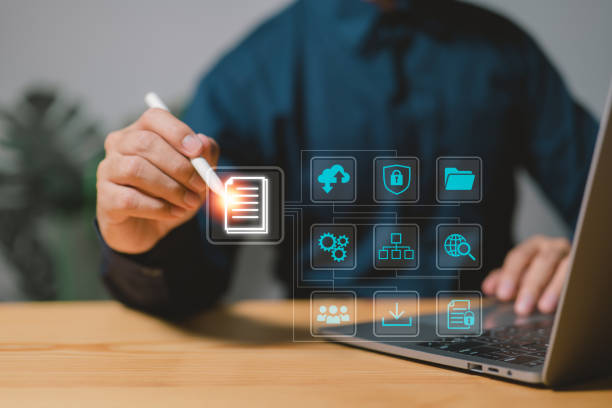Introduction to On-Page SEO and Its Importance
![]()
On-page SEO, often known as On-Page Optimization, is the heart of every successful #SEO strategy.
This vital process focuses on improving various aspects of web pages that are directly controlled by you, with the main goal of achieving higher rankings in search engine results.
This optimization includes a set of technical and content-related measures, such as optimizing titles and meta descriptions, intelligent use of keywords, creating a proper structure for headings, and ensuring high page loading speed.
The ultimate goal of on-page SEO is to help search engine bots, such as Google, to more accurately understand your page’s topic and relevance to specific user searches.
This deep understanding leads to a better match of your content with user intent and consequently, display in top positions.
The importance of on-page SEO cannot be overstated, as without a solid foundation in this area, even the strongest off-page SEO strategies (like link building) may not achieve desired results.
On-page optimization not only helps search engines index and rank your pages but also directly impacts user experience.
A website that is well-optimized in terms of on-page SEO typically has a logical structure, readable content, and high accessibility.
This leads to a reduced bounce rate, increased user dwell time on the site, and improved overall engagement.
All these factors send positive signals to search engines, indicating that your website is a credible and valuable resource for users.
In today’s digital age, where competition for top positions in search results has reached its peak, investing in on-page SEO is a smart and strategic decision for any online business.
This process requires technical knowledge, creativity in content creation, and a deep understanding of user behavior and search engine algorithms to attract maximum #organic_traffic.
Continuous optimization in this area will guarantee your long-term success in the online space.
Do you have an online store but your sales aren’t as expected? Rasaweb solves your problem forever by designing professional e-commerce websites!
✅ Significant increase in conversion rates and sales
✅ Unparalleled user experience for your customers
⚡ Click to get free consultation from Rasaweb!
Key Elements of On-Page SEO and Their Optimization
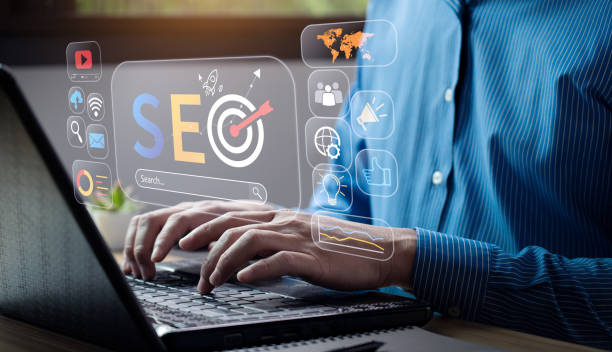
The page title (Title Tag) and meta description are among the first touchpoints users and search engines have with your page, thus their optimization in the on-page SEO process is of particular importance.
An attractive and relevant title not only helps search engines understand your page’s topic and match it with relevant searches, but also encourages users to click.
The title should contain the main keyword and be both engaging and concise (typically up to 60-70 characters for full display in results).
Google uses this tag to display the page title in search results, and its correct selection can help increase your click-through rate (CTR).
Meta descriptions, although not directly affecting rankings, play an important role in attracting users and increasing CTR.
These descriptions should provide an appealing and enticing summary of the page’s content and include the keyword.
They should give the user a reason to click on your link and provide an accurate preview of what awaits them on the page.
Optimizing these two elements is a fundamental part of on-page SEO and should not be taken lightly.
Page URLs should also be short, descriptive, and contain keywords.
Using readable and logical URLs is not only better for users (as they provide a preview of the content) but also helps search engines understand the site’s structure and information hierarchy.
For example, a good URL, such as yoursite.com/blog/advanced-on-page-seo, is much better than yoursite.com/?p=123.
All these are parts of the comprehensive on-page optimization process that must be carried out with precision and a clear strategy to bring the best results for your website and contribute to the overall improvement of on-page optimization.
Content and Heading Structure Optimization
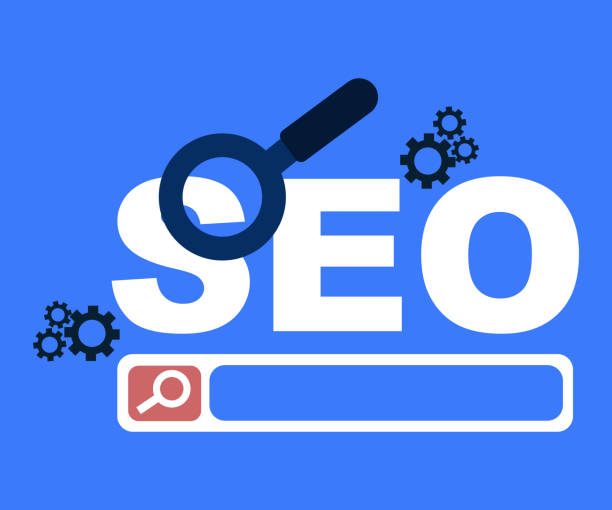
On-page SEO is not limited to keywords and meta tags; quality content is king and should be at the center of your attention.
Valuable and comprehensive content not only fully addresses the user’s informational needs but also sends positive signals to search engines, indicating your page’s credibility and topical relevance.
To optimize content, you must ensure that you provide accurate, up-to-date, and unique information.
Answering potential user questions and providing in-depth coverage of the topic significantly helps increase dwell time and reduce bounce rate.
Natural use of keywords throughout the text, without overdoing it (keyword stuffing), is very important.
Remember that the main goal is to provide value to the user, not just satisfy search bots; bots look for content that satisfies users.
The structure of Headings (H1, H2, H3, etc.) also constitutes an important part of on-page SEO.
H1 should include your main keyword and be used only once per page, as it represents the main title and core topic of the page.
H2s are used for main content sections and H3s for subsections, and this hierarchy can extend up to H6.
This hierarchical structure not only helps with content readability and improves user experience, but also allows search engines to correctly understand the organization and informational hierarchy of your page.
This helps them identify the main and sub-topics of your content and better understand their relevance to user searches.
A logical and correct heading structure makes your content easier for crawling bots, thereby helping your page rank better in search results.
| Element | Importance in On-Page SEO | Description and Optimization Tips |
|---|---|---|
| Content Quality | High | Provide comprehensive, accurate, unique, and user-friendly content. Answer user questions and provide sufficient depth. |
| Keywords | High | Natural and strategic use of main and secondary keywords in text, titles, and headings. Avoid Keyword Stuffing. |
| Heading Structure | Medium to High | Correct use of H1 (once), H2, H3, etc., for logical content organization and improved readability for users and bots. |
| Text Readability | Medium | Short sentences, small paragraphs, use of lists, bullet points, and images to improve user experience and reduce eye strain. |
| Content Length | Variable | Depending on the topic and goal, longer content can provide more depth, but quality and comprehensive topic coverage are always more important than mere quantity. |
Technical Aspects of On-Page SEO: Site Speed and Mobile-Friendliness

On-page SEO is not limited to content and keywords; it also includes technical aspects that directly impact rankings and user experience.
Website loading speed is one of the most important of these factors.
In today’s world where users have high expectations for speed, any loading delay can lead to site abandonment and an increased bounce rate, both of which are negative signals for search engines.
Google also considers site speed as an important ranking factor and has included it in its Core Web Vitals metric.
Tools like Google’s PageSpeed Insights can help you identify speed issues and provide solutions for improvement, including image compression, code optimization, and caching.
In addition to speed, website responsiveness (being responsive) for mobile devices is also highly important.
Given the significant increase in smartphone usage for internet access and searching, having a mobile-friendly website that provides a consistent user experience across all devices (desktop, tablet, mobile) is essential.
Google uses Mobile-First Indexing, meaning it prioritizes your site’s mobile version for indexing and ranking.
These optimizations are considered fundamental to on-page SEO, and neglecting them can lead to a significant loss of traffic and rankings.
Ensuring the correct technical performance of your website provides a strong foundation for success in on-page SEO and signals to search engines that your site has high quality and accessibility.
These technical aspects must be continuously monitored and optimized.
Does your current website convert visitors into customers or drive them away? Solve this problem forever with professional corporate website design by Rasaweb!
✅ Establish strong credibility and branding
✅ Attract target customers and increase sales
⚡ Get a free consultation right now!
Internal Linking Strategy for On-Page SEO
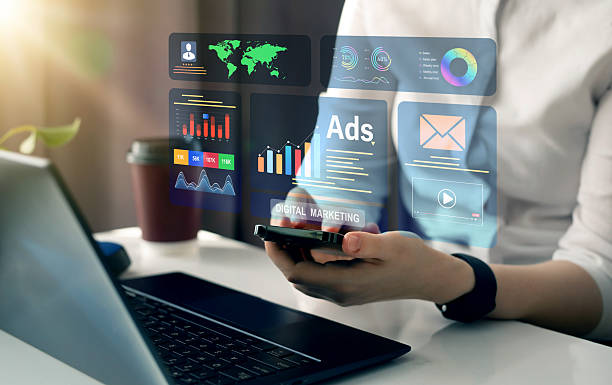
Internal linking, one of the lesser-known but incredibly effective elements in on-page SEO, can have a profound impact on your site’s performance in search results.
This process involves creating links from one page on your website to another page on the same website.
The main purpose of this is multifaceted: firstly, to improve site navigation for users, helping them find relevant content faster and stay longer on your site.
Secondly, to distribute page authority (Page Authority or “Link Juice”) throughout the site.
When a highly authoritative page links to another page, some of that authority is transferred to the destination page, which helps improve the destination page’s ranking.
Thirdly, to help search engines discover and index new pages and better understand the structure and topical relevance between different pages.
When creating internal links, ensure that the links are logical, natural, and relevant to the content of both the source and destination pages.
Use descriptive and keyword-rich anchor texts, but avoid overdoing it and repeating keywords.
The anchor text should accurately reflect the topic of the destination page.
For example, if you have an article about “SEO tools,” you can link to another article titled “Comprehensive Guide to On-Page SEO” within your text.
This transfers power from the source page to the destination page and also strengthens the semantic connection between your pages.
A strong and organized internal linking structure signals to search engines that your website contains organized and relevant content, significantly helping to improve the overall site ranking.
This strategy is an integral part of on-page optimization and should not be underestimated, as it plays a key role in creating a strong semantic network within your website.
Image Optimization for On-Page SEO
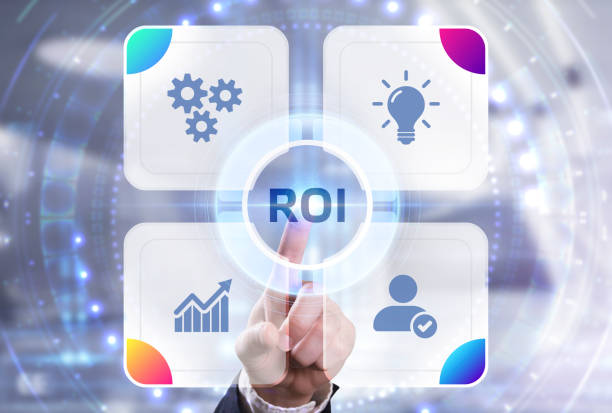
Image optimization is often overlooked, but it plays a crucial role in on-page SEO.
Images not only enhance user experience and make your content more engaging, but they can also be a significant source of traffic through image search.
The first step in image optimization is to use descriptive, keyword-rich filenames.
Instead of names like “IMG001.jpg” or “image.png”, use names like “on-page-seo-key-concepts.jpg” or “internal-optimization-guide-image.webp”.
This helps search engines understand the image’s subject and match it with relevant searches.
More important than the filename is the alternative text (Alt Text).
Alt Text is a short, precise, and relevant description of the image content that is displayed if the image fails to load and is read by screen readers for visually impaired users.
Alt Text also helps search engines understand the image content and its relevance to the page’s text.
Ensure your Alt Text includes relevant keywords, but avoid stuffing it with unnecessary keywords; its main purpose is to describe the image.
Image file size also has a direct impact on page loading speed.
Use image compression without significant quality loss and consider modern formats like WebP, which have smaller file sizes and offer high quality.
Also, implementing Lazy Loading can help improve initial page loading speed, as images are only loaded when the user scrolls to the relevant section of the page.
These measures collectively contribute to improving on-page SEO performance, reducing bounce rate, and providing a smoother user experience.
User Experience (UX) and On-Page SEO
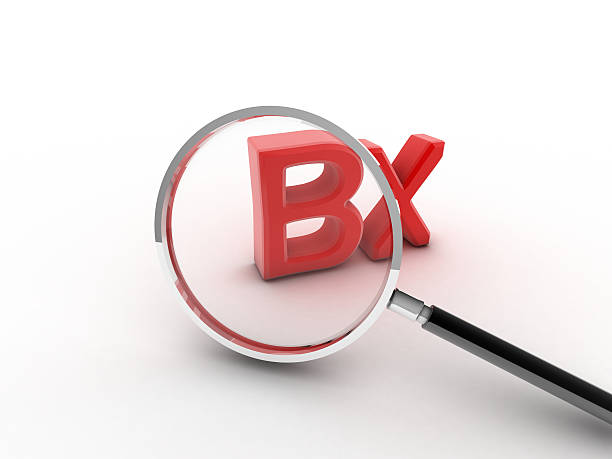
Have you ever considered how User Experience (UX) affects your on-page SEO? The connection between UX and search engine optimization is more profound than many imagine, and these two concepts are strongly intertwined.
Google increasingly relies on user behavior signals for page ranking.
Factors such as Bounce Rate, Dwell Time on site, and Click-Through Rate (CTR) all indicate the quality of the user experience on your site and indirectly, but powerfully, influence on-page SEO.
A website with strong UX encourages users to spend more time on the site, visit more pages, and have a lower bounce rate.
When users find your content valuable and useful, they stay on the site longer and interact more.
These signals indicate to Google that your content is valuable, relevant, and responsive to user needs.
Responsive Design, easy and intuitive navigation, readable and organized content, and high loading speed are all elements that contribute to improving UX.
Ultimately, focusing on UX means focusing on the user, and the more satisfied users are with your site, the higher your chances of success in on-page optimization and achieving higher rankings in search results.
This analytical approach provides a deeper look into the synergy between user experience and on-page SEO strategies, showing how an optimal user experience undeniably contributes to your optimization goals.
Continuous UX optimization is a long-term investment in SEO On-Page success.
| UX Metric | Description | Impact on On-Page SEO |
|---|---|---|
| Bounce Rate | The percentage of users who leave a page after visiting it, without interacting with the site. | A high bounce rate indicates irrelevant content or a poor user experience, which can reduce rankings. Google views this as a negative signal. |
| Dwell Time | The amount of time a user spends on your page after clicking on a search result. | Longer dwell time indicates engaging and useful content and is a positive ranking signal, as it shows user satisfaction. |
| Click-Through Rate (CTR) | The percentage of users who click on your page after seeing it in search results. | Higher CTR indicates to search engines that your title and meta description are engaging and relevant, and your content is what was expected. |
| Page Load Speed | The speed at which page content becomes visible and interactive for the user. | High speed significantly improves user experience and is one of Google’s direct ranking factors (Core Web Vitals). |
| Mobile-Friendliness | The site’s ability to display and function correctly on mobile devices and tablets. | Essential for ranking in Google’s Mobile-First Indexing and providing an optimal user experience for the majority of users. |
Essential Tools for Analyzing and Improving On-Page SEO

To effectively manage and improve your website’s on-page SEO, you need to use appropriate and powerful tools.
These tools help you monitor your page performance, identify issues, and discover new optimization opportunities.
Without accurate data and information, optimization can be guesswork, whereas with the right tools, it becomes a science.
Google Search Console (GSC) is a free and very powerful tool from Google that provides vital information about how your site is seen by Google.
With GSC, you can examine indexing issues, search performance (keywords you’ve ranked for, click-through rate, and impressions), internal and external links, and security problems.
This tool is essential for anyone looking to improve their on-page SEO, as it directly shows your communication with Google.
Google Analytics (GA) is also a free tool that comprehensively analyzes your website traffic data.
With GA, you can observe user behavior on your site; where they came from, how long they stayed on the site, which pages they visited, their navigation path on the site, and their bounce rate.
This information helps you adjust your content strategy, navigation structure, and user experience (UX) based on real data, and identify on-page SEO weaknesses.
Paid tools like Ahrefs and Semrush also offer more advanced capabilities for competitor analysis, keyword discovery, link examination, and comprehensive on-page and off-page SEO audits.
These tools can help you on a large scale to discover new opportunities and examine competitor strategies.
Using these tools in combination gives you a comprehensive and accurate view of your website’s on-page SEO status and paves the way for continuous improvement and reaching top rankings.
Are you worried about losing customers because you don’t have a professional e-commerce site?
Forget these worries with e-commerce website design by Rasaweb!
✅ Significant increase in sales and visitor-to-customer conversion rates
✅ Professional and user-friendly design that builds customer trust
⚡ Get a free consultation from Rasaweb
Common Mistakes in On-Page SEO and How to Avoid Them
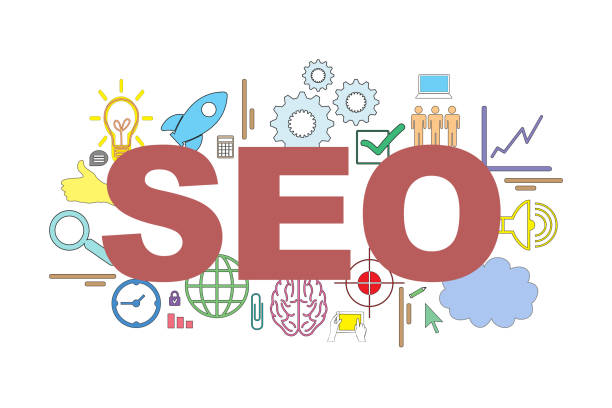
On the path to optimizing on-page SEO, committing common mistakes can render your efforts fruitless and even harm your website’s ranking.
Do you know which mistakes harm your ranking more than others and how to avoid them? One such mistake is keyword stuffing.
Although using keywords is important, their excessive and unnatural repetition not only disrupts user experience and makes your content unreadable but can also lead to penalties from search engines and lower your ranking.
Keywords should be placed naturally and within the appropriate context of the text.
Another common mistake is ignoring duplicate content.
Duplicate content can confuse search engines, preventing them from identifying the original and authoritative page, which leads to reduced rankings and diluted authority among pages.
Ensure that each page has unique content or use canonical tags to specify the original version of the content.
Lack of mobile optimization is also a major error, especially considering Google’s Mobile-First Indexing.
If your site does not display correctly on mobile and provides a poor user experience, your ranking will be severely harmed, and you will lose your mobile traffic.
Also, weak or insufficient internal linking can prevent proper page authority distribution and make it difficult for search bots to access important pages.
This can result in some of your pages not being seen in search results.
By avoiding these common mistakes and focusing on correct on-page SEO approaches, you can prevent potential harm and smooth your path to success in the online space.
This analysis helps you approach on-page optimization challenges with a broader perspective and build your strategies based on best practices.
The Future of On-Page SEO and Continuous Optimization
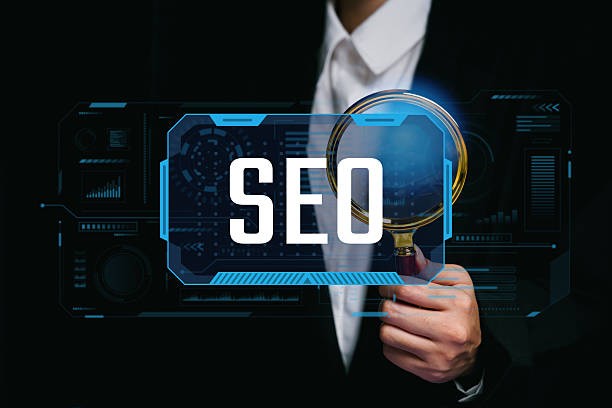
The world of SEO is constantly changing and evolving, and on-page SEO is no exception.
Future trends and changes in search engine algorithms make the need for continuous optimization more essential than ever.
With the continuous emergence and advancement of artificial intelligence and machine learning, Google’s algorithms have become smarter and have a greater ability to understand complex content, user intent, and even natural language.
This means that focusing on the quality, depth, and relevance of content to the search intent will become increasingly important, and superficial content will no longer be able to achieve good rankings.
Concepts like E-A-T (Expertise, Authoritativeness, Trustworthiness), which increasingly affect website rankings, demonstrate the importance of producing credible content by experts.
For future on-page SEO, this means that your site must not only provide useful and comprehensive information but also be a trustworthy and authoritative source in its field, especially in sensitive areas like health or finance.
Voice search is also growing, and optimizing content to answer verbal questions and natural language will become an important aspect of on-page SEO, as users tend to articulate full sentences.
Ultimately, on-page SEO is not a one-time process but requires continuous monitoring, analysis, and updates.
To maintain and improve rankings in the long term, you must always be aware of the latest algorithm changes and adjust your on-page optimization strategies accordingly.
This analytical and forward-looking approach ensures that your website remains competitive in the dynamic world of search and consistently attracts valuable organic traffic.
Continuous optimization is the key to stability and success in on-page SEO.
Frequently Asked Questions
| Question | Answer |
|---|---|
| What is On-page SEO? | On-page SEO refers to a set of actions performed within your website to improve its ranking in search engine results. This includes optimizing content, site structure, and HTML code. |
| Why is On-page SEO important? | On-page SEO helps search engines understand your page’s content and determine whether your content is relevant to searchers. It is the foundation of any successful SEO strategy. |
| What are the key elements of On-page SEO? | Page title (Title Tag), meta description, keyword usage, image optimization, heading structure (H1, H2, …), internal linking, and content quality are key elements. |
| How to optimize the page title (Title Tag)? | The page title should include the main keyword, be attractive and encouraging to click, and be between 50 and 60 characters long (or suitable pixels) to be fully displayed in search results. |
| What role does the Meta Description play in On-page SEO? | The meta description is a summary of the page’s content displayed below the title in search results. Although it does not directly affect rankings, it helps SEO by increasing the click-through rate (CTR). |
| What is the importance of using heading structure (H1, H2, H3) in On-page SEO? | Headings structure the page content and make it easier to read. H1 is typically the main title of the page and should include the keyword. H2 and H3 are used to organize subsections and help search engines understand the content hierarchy. |
| How to effectively use keywords in content? | Keywords should be used naturally and logically throughout the content, including the introduction, body, and conclusion. Avoid excessive keyword stuffing. |
| What steps are involved in optimizing images for On-page SEO? | It includes compressing images to reduce size, using descriptive filenames, adding appropriate alternative text (Alt Text), and optimizing the image title and description. Alt Text is crucial for accessibility and helping search engines understand image content. |
| What is Internal Linking and what are its benefits? | Internal linking means creating links from one page on your website to another page on the same website. This helps users navigate your site easily, distributes page authority throughout the site, and helps search engines better understand your site’s structure. |
| What is the importance of content quality in On-page SEO? | Quality, accurate, comprehensive, and valuable content for users, is the cornerstone of On-page SEO. Search engines prefer content that meets user needs. Quality content leads to longer user dwell time on the site and a reduced bounce rate, which are positive SEO signals. |
And other advertising services by Rasa Web Advertising Agency
Smart Digital Advertising: Designed for businesses seeking to increase website traffic through user experience customization.
Smart Website Development: Designed for businesses aiming to increase sales through key page optimization.
Smart Digital Advertising: An effective tool for increasing click-through rates with the help of custom programming.
Smart UI/UX: Professional optimization for campaign management using real data.
Smart Google Ads: A fast and efficient solution for improving SEO rankings with a focus on custom programming.
And over a hundred other services in the field of internet advertising, advertising consultation, and organizational solutions
Internet Advertising | Advertising Strategy | Advertorials
Resources
Comprehensive Guide to On-Page SEO
What is On-Page SEO?
On-Page SEO Checklist
On-Page SEO Tutorial
? To elevate your business in the digital space, Rasaweb Afarin Digital Marketing Agency is with you. By leveraging the latest online marketing methods, from SEO and content creation to modern UI website design, we offer comprehensive and results-oriented solutions for greater visibility and attracting loyal customers. Let our expertise pave your path to digital success and help you achieve your goals.
📍 Tehran, Mirdamad Street, next to Central Bank, Southern Kazeroun Alley, Ramin Alley, No. 6

